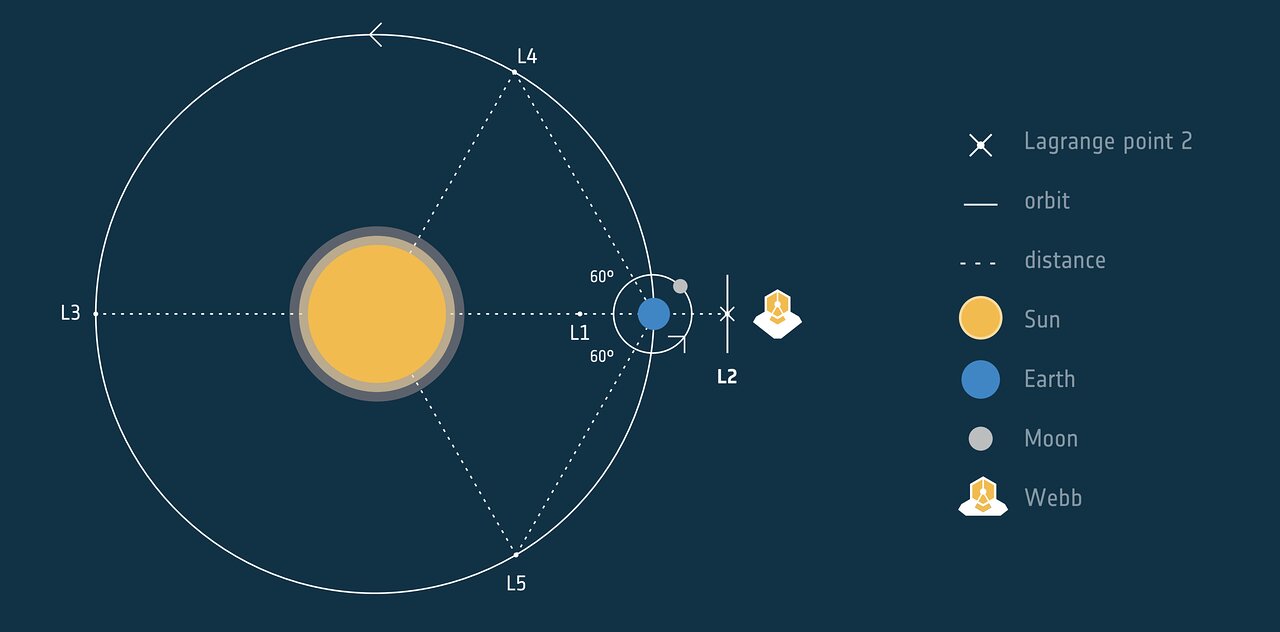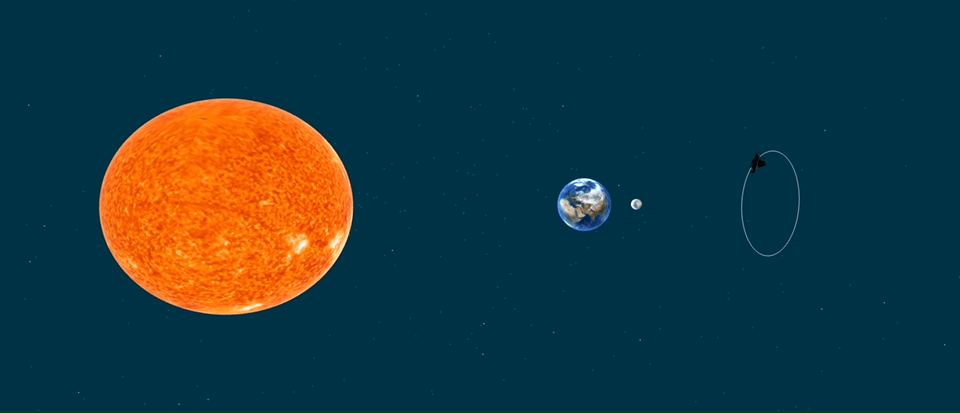Orbit
On 22 January 2022, Webb successfully completed a final correction burn that placed it into its desired orbit, roughly 1.5 million kilometers away from the Earth at what is called the second Sun-Earth Lagrange point, or “L2” for short.

Mathematically, Lagrange points are solutions to what is called the “restricted three-body problem.” Any two massive, gravitationally significant objects in space generate five specific locations – Lagrange points – where their gravitational forces and the centrifugal force of the motion of a small, third body such as a spacecraft are in equilibrium. Lagrange points are labeled L1 through L5 and are preceded by the names of the two gravitational bodies that generate them (the big one first).
While all Lagrange points are gravitational balance points, not all are completely stable. L1, L2, and L3 are “meta-stable’ locations with saddle-shaped gravity gradients, like a point on the middle of a ridgeline between two slightly higher peaks wherein it is the low, stable point between the two peaks, but it is still a high, unstable point relative to the valleys on either side of the ridge. L4 and L5 are stable in that each location is like a shallow depression or bowl atop the middle of a long, tall ridge or hill.
L2 is an ideal location for an infrared observatory. At Sun-Earth L2, the Sun and Earth (and Moon, too) are always on one side of space, allowing Webb to keep its telescope optics and instruments perpetually shaded. This enables them to get cold for infrared sensitivity, yet still access nearly half the sky at any given moment for observations. To view any and every point in the sky over the course of time requires merely waiting a few months to travel farther around the Sun and reveal more of the sky that was previously “behind” the Sun.
Moreover, at L2, Earth is far enough away that the roughly room-temperature heat radiating from it won’t warm up Webb. And because L2 is a location of gravitational equilibrium, it is easy for Webb to maintain an orbit there. Note that it is simpler, easier, and more efficient to orbit around L2 than to dwell precisely at L2. Furthermore, by orbiting rather than being exactly at L2, Webb will never have the Sun eclipsed by Earth, which is necessary for Webb’s thermal stability and for power generation. In fact, Webb’s orbit around L2 is larger in size than the Moon’s orbit around Earth. L2 is also convenient for always maintaining contact with the Mission Operations Center on Earth through the Deep Space Network. Other space-based observatories, including ESA’s Herschel and Gaia observatories, orbit Sun-Earth L2 for the same reasons.

Diagram is not to scale

